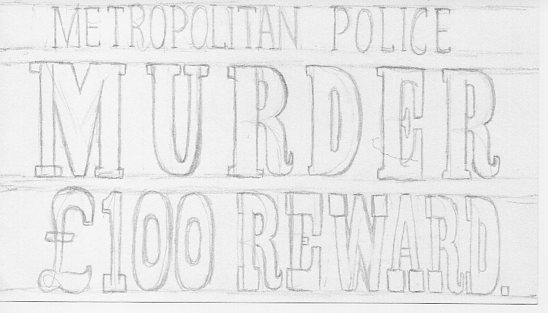The Metropolitan Police’s Crime Museum was a private exhibition of objects used in real crimes, housed at New Scotland Yard and open only for police professionals as a training tool. It has been used for that purpose since the 1870s, but now for the first time ever its collection is open to the public through the Crime Museum Uncovered temporary exhibition, housed at the Museum of London.
Crime Museum Uncovered displays original weapons, objects and testimonials from some of the UK’s most shocking and notorious crimes, from hanging ropes used in executions to original photographs and documents; it’s a journey through the evolution of crime and criminal investigation in the last 140 years that includes themed sections on topics like drugs, illegal abortion, robbery, terrorism, counterfeit and espionage.

The space is divided in four relatively small rooms and and a big principal space, all connected by windows that make possible to catch a glimpse of the other ambients, stimulating the visitor’s curiosity.
The displays are decorated with images inspired by William Hartley’s courtroom illustrations and have a vintage taste that manages to blend nicely with the technological parts of the exhibition.

The visitor enters through a space occupied by a police car and then reaches the first room, dedicated to the history of the museum.
The tension builds up through the journey, as the car and the innocent looking object you encounter early on get soon replaced weapons and death masks.

The second room contains the gun used in the 1840 assassination attempt on Queen Victoria, samples of hair and textiles from unsolved murders and a cushion that a prison inmate sewed with her own hair.
The space is surrounded by a ledge, from which the death masks of the murderers hanged outside Newgate Prison stare at the visitor.

The following room displays six nooses used in real executions, accompanied only by the names of the executed and their victims.
In the main space 24 murder cases dating from 1905 to 1975 are examined; illustrated with weapons, pieces of evidence and original photographs, they show the evolution of crime and crime detection over the decades.

The final room encourages you to think about what you have seen, through videos and an interactive section that allows you to leave a message or opinion answering to questions on some screens.
Overall the exhibition is shocking, fascinating, in some points almost disturbing. The design is simple and direct, inviting you to focus on the cases and the style of the narration is personal yet detached, leaving an unsettling feeling in the visitor, used to see crimes just a as fiction.
The approaches I decided to use in researching the exhibition are aesthetic and analytical. My goal was to gather all the information I possibly could, while observing how the curators decided to display aesthetically an exhibition about pain and death to make it visually appealing. To do so I examined the spaces, colors and fonts used and tried to sketch a map of the exhibition, as well as the most interesting rooms.

The Crime Museum Uncovered satisfies the morbid curiosity of the visitor and and the same times raises questions, as it makes you think after you leave about human nature and what we are capable of doing. It gives you a new prospective on crime, and shocks you with its cruel realness.
I would definitely suggest anyone interested in the subject to see it.

Reblogged this on gino oneto.
LikeLike
The review is well informed and gives a well structured view of the spaces in which the exhibition is presented. It describes each room with a general visual description of the content, highlighting the main and most striking elements the visitor can notice. The approach is quite personal but also considers the dynamics of the stream of people that fills the space of the event, this way one is given a general perception of the public experience.I like the use of pictures and drawings to complement the review, it helps the reader to understand better what …
LikeLike